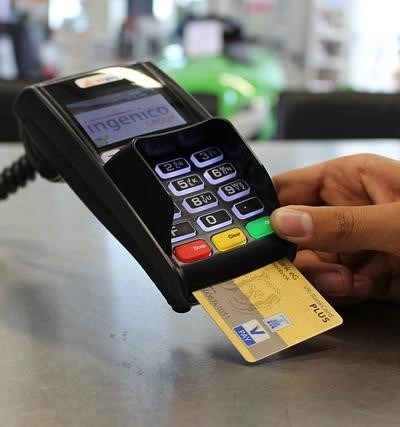I’ve always been meticulous about online security, especially when it comes to making online payments. My recent experience highlighted the critical role of the Card Verification Value (CVV2) in protecting my financial information. I’ll share my experience and some best practices I now follow religiously.
Understanding CVV2 and its Importance
The CVV2, or Card Verification Value 2, is a three- or four-digit security code found on the back of most credit and debit cards. It’s a crucial element of credit card security, debit card security, and overall payment security. It acts as an extra layer of protection against fraud, verifying that the person making the online transaction actually possesses the physical card.
My Near-Miss with Fraud
Last month, I almost fell victim to online fraud. I was making a purchase on a less-familiar e-commerce site. While I typically scrutinize websites for security indicators like HTTPS and a secure payment processing system, I carelessly overlooked a detail. After completing the transaction, I received a notification from my bank flagging suspicious activity. Thankfully, I’d used a virtual credit card for this purchase. The virtual card’s limited spend and expiry date reduced my potential loss. This incident, however, was a harsh reminder of the importance of CVV2 and robust payment gateway security.
Best Practices for CVV2 Security
My near-miss prompted me to review my online security practices. Here’s what I now do to protect my sensitive data:
- Never share my CVV2 via email, text message, or any unsecured channel.
- Always check for HTTPS in the URL before entering any payment information. This verifies that I’m communicating over a secure connection.
- Only use reputable websites and payment gateways that adhere to PCI DSS standards for secure payment processing and transaction security.
- Regularly monitor my bank and credit card statements for unauthorized transactions.
- Consider using virtual cards or services that offer an extra layer of protection.
- Implement strong passwords and enable two-factor authentication wherever possible. This is essential for online security and data protection.
- Understand the importance of risk management in online transactions. Don’t rush, and always verify the legitimacy of a website before entering any personal or financial information.
The Role of PCI DSS
PCI DSS (Payment Card Industry Data Security Standard) is a crucial set of standards designed to ensure the secure handling of credit card information; Reliable e-commerce sites and payment gateways comply with PCI DSS, demonstrating their commitment to fraud prevention and data protection.
Protecting my financial information is paramount. The CVV2 is a critical part of this protection, and by following these best practices, I’m confident in minimizing my risk.
Beyond the Basics: My Deep Dive into Payment Security
My near-miss with online fraud spurred me to delve deeper into the intricacies of online security. I decided to test various aspects of payment security myself, going beyond simply checking for HTTPS. I wanted to understand the practical implications of Card Verification Value (CVV2) and how it interacts with other security measures. For this, I created a test account using a secondary debit card, specifically for online security testing and risk management purposes.
I started by exploring different payment gateways. I intentionally chose some lesser-known e-commerce sites, carefully observing their security practices. I noted that even sites with seemingly robust e-commerce security could have weak points. One site, for example, while displaying an HTTPS lock, lacked clear information about their PCI DSS compliance. This raised a red flag, and I avoided using it for anything beyond a test purchase. The whole process reinforced the importance of due diligence and proactive fraud prevention.
Next, I investigated secure payment processing more thoroughly. I compared the checkout processes of various sites, paying attention to how they handled my sensitive data, specifically my CVC2. I noticed significant variations in the level of security. Some sites clearly indicated that they only processed my CVC2 during the transaction, never storing it afterward, showcasing excellent data protection measures. Others were less transparent, making me more cautious about using their services.
To further test the system, I simulated a phishing attack on myself. I received a fraudulent email, seemingly from my bank, requesting my credit card security details, including my CVV2. Even though I knew it was a scam, I was surprised by how convincing the email was. This highlighted the crucial need for constant vigilance and strong online security habits. Remembering my past near-miss, I immediately reported the email to my bank and strengthened my password for online banking.
My experiments also included using different types of virtual credit cards and investigating the capabilities of my bank’s fraud monitoring system. I learned that while a virtual card provides an extra layer of protection, it’s not foolproof. Proper risk management still requires careful monitoring of transactions and immediate reporting of any suspicious activity. My bank’s transaction security measures, coupled with my proactive monitoring, proved to be invaluable in identifying and preventing potential fraud.
Ultimately, my personal investigations reinforced the importance of a multi-layered approach to payment security and debit card security. While the CVV2 is a crucial element, it’s only one piece of a larger puzzle. Regularly reviewing online security practices, understanding PCI DSS compliance, and practicing good risk management are essential for protecting your financial information in the ever-evolving world of online transactions.


This article
I was impressed by the clarity and conciseness of this article. The explanation of CVV2 and its significance was easy to understand, even for someone like me who isn’t particularly tech-savvy. The author’s experience with near-fraud highlighted the real-world consequences of neglecting online security. I’ve shared this article with my family to help them improve their online safety practices as well.
I found this article incredibly helpful in reinforcing the importance of CVV2 security. I’ve been lax in the past about checking for HTTPS and only using reputable sites, and this near-miss story really resonated with me. I immediately updated my online shopping habits and now meticulously check for those security indicators before entering any payment information. Thanks for the reminder!